|
|
Post by madpatty on Jun 24, 2015 8:49:47 GMT -5
This pic was taken at about 25 Psi P2. The hotspot is visible at 1'o clock position.
 Cheers, Patty
|
|
|
|
Post by madpatty on Jun 24, 2015 8:52:08 GMT -5
T His is the perfect end where combustion is occurring in the primary secondary region.
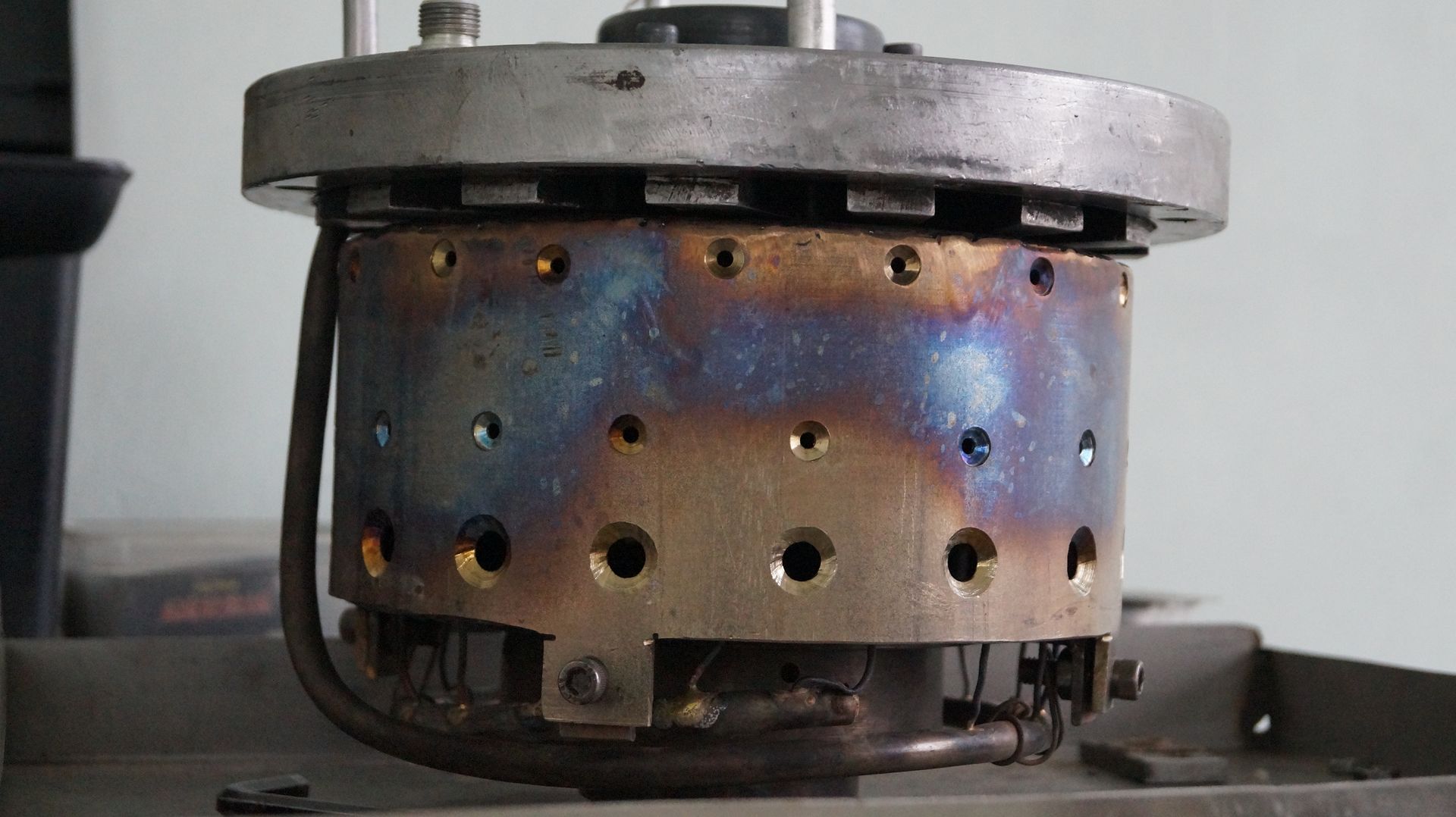
The flamefront started to move downwards:-
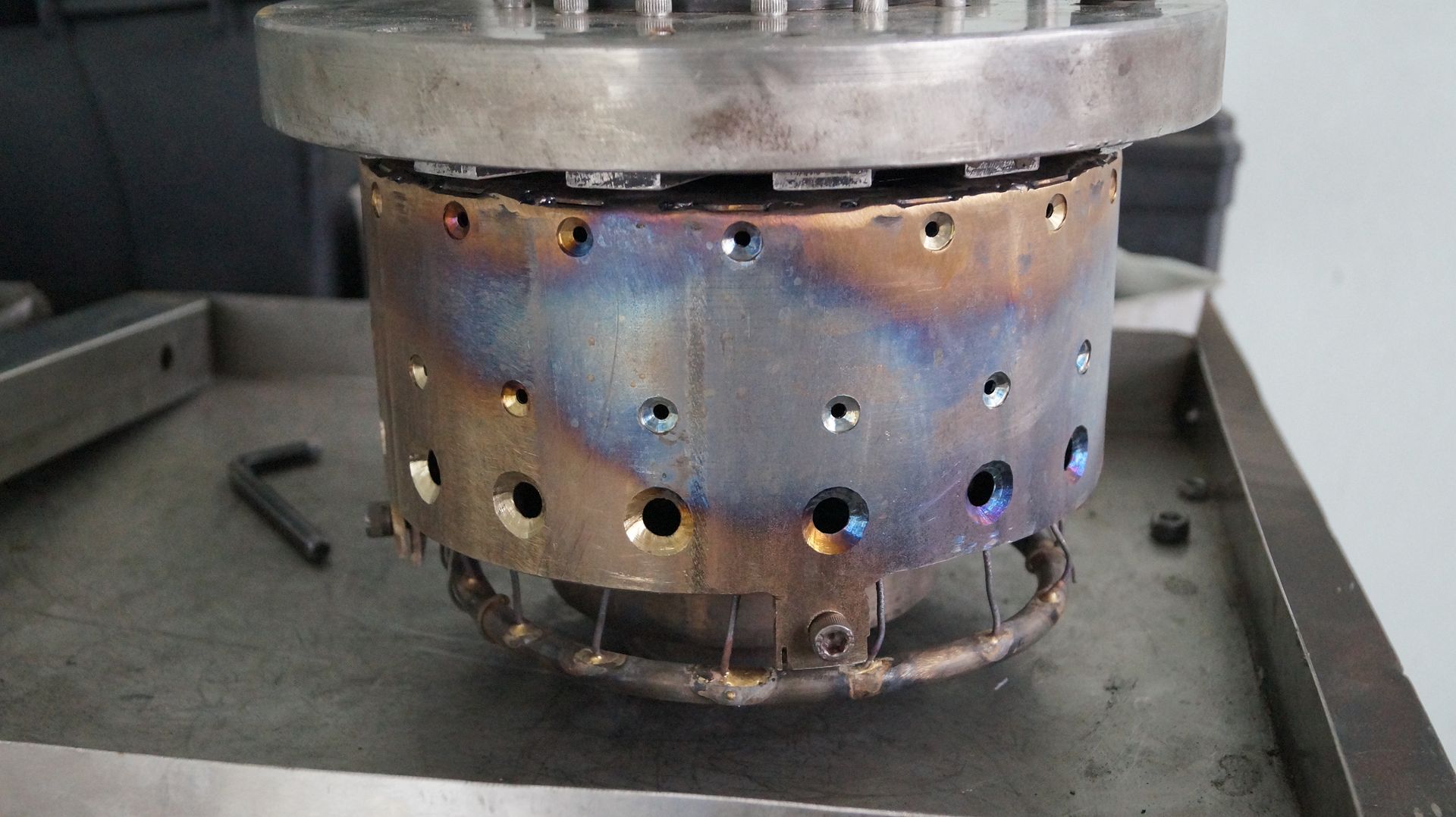
cheers,
Patty
|
|
|
|
Post by madpatty on Jun 24, 2015 8:55:50 GMT -5
The flame front crossed the tertiary region here(the region where the hotspot is present) :-


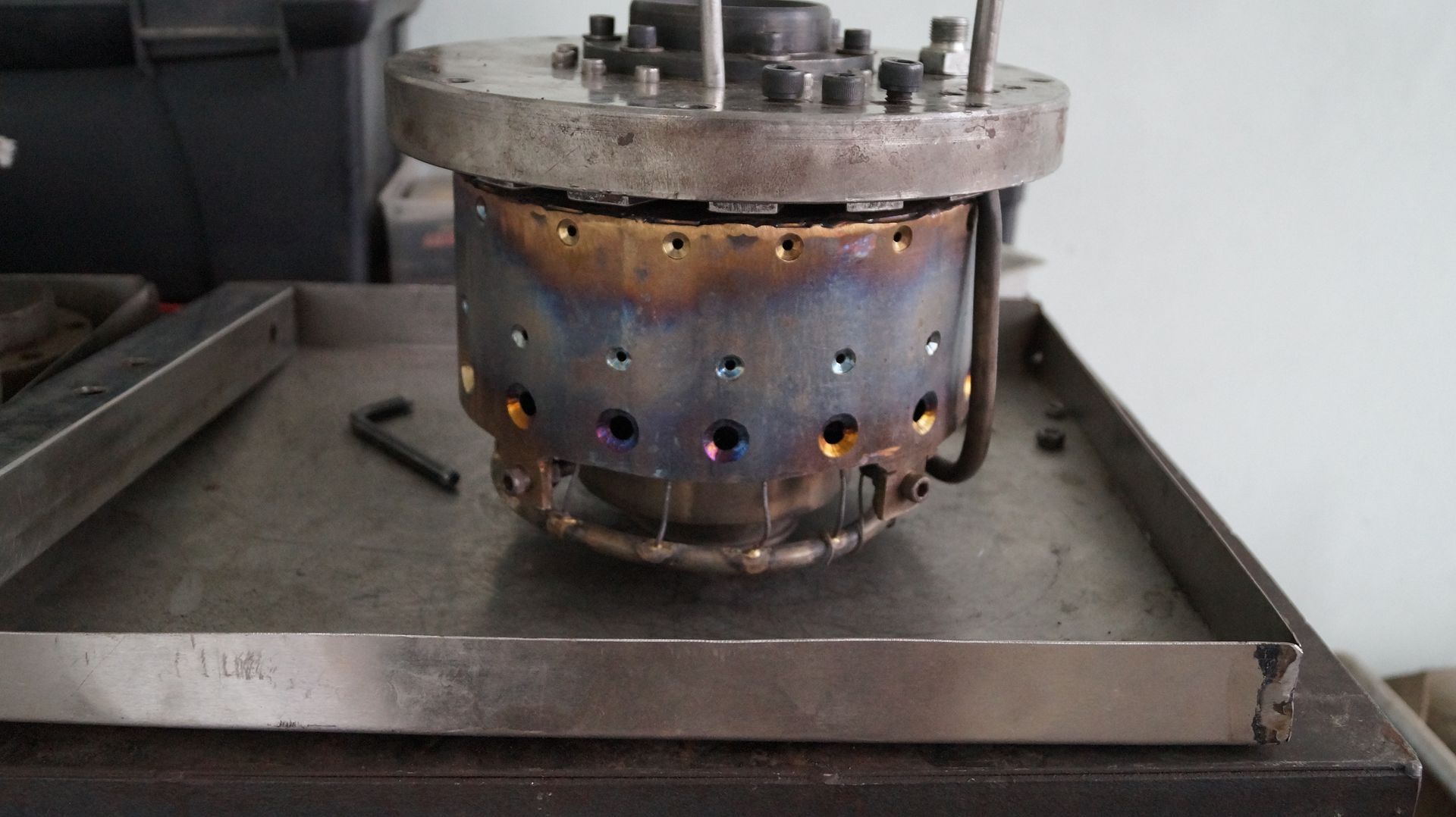
cheers,
Patty
|
|
|
|
Post by madpatty on Jun 24, 2015 8:57:37 GMT -5
The heat marks on the NGV plate :-
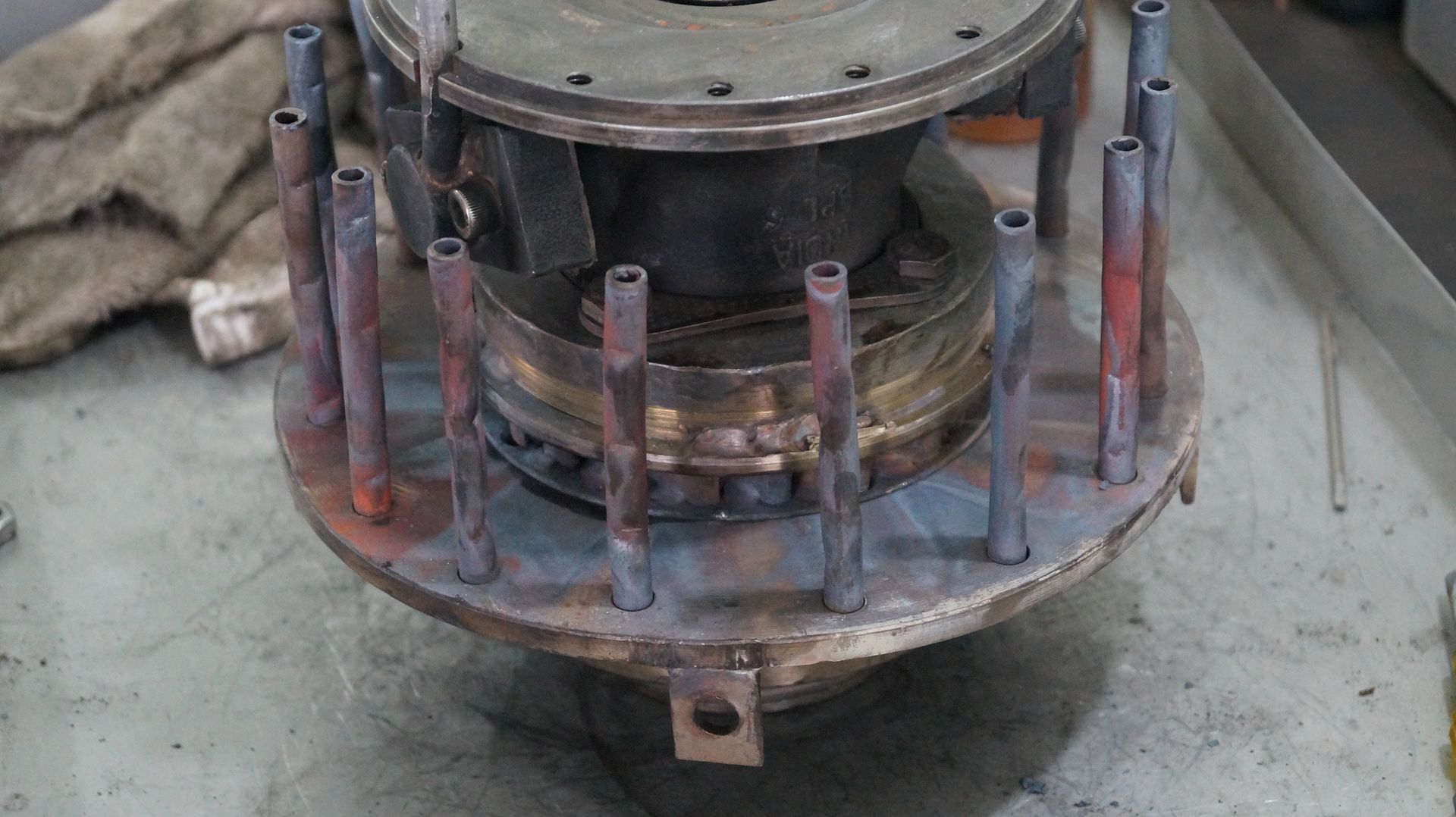
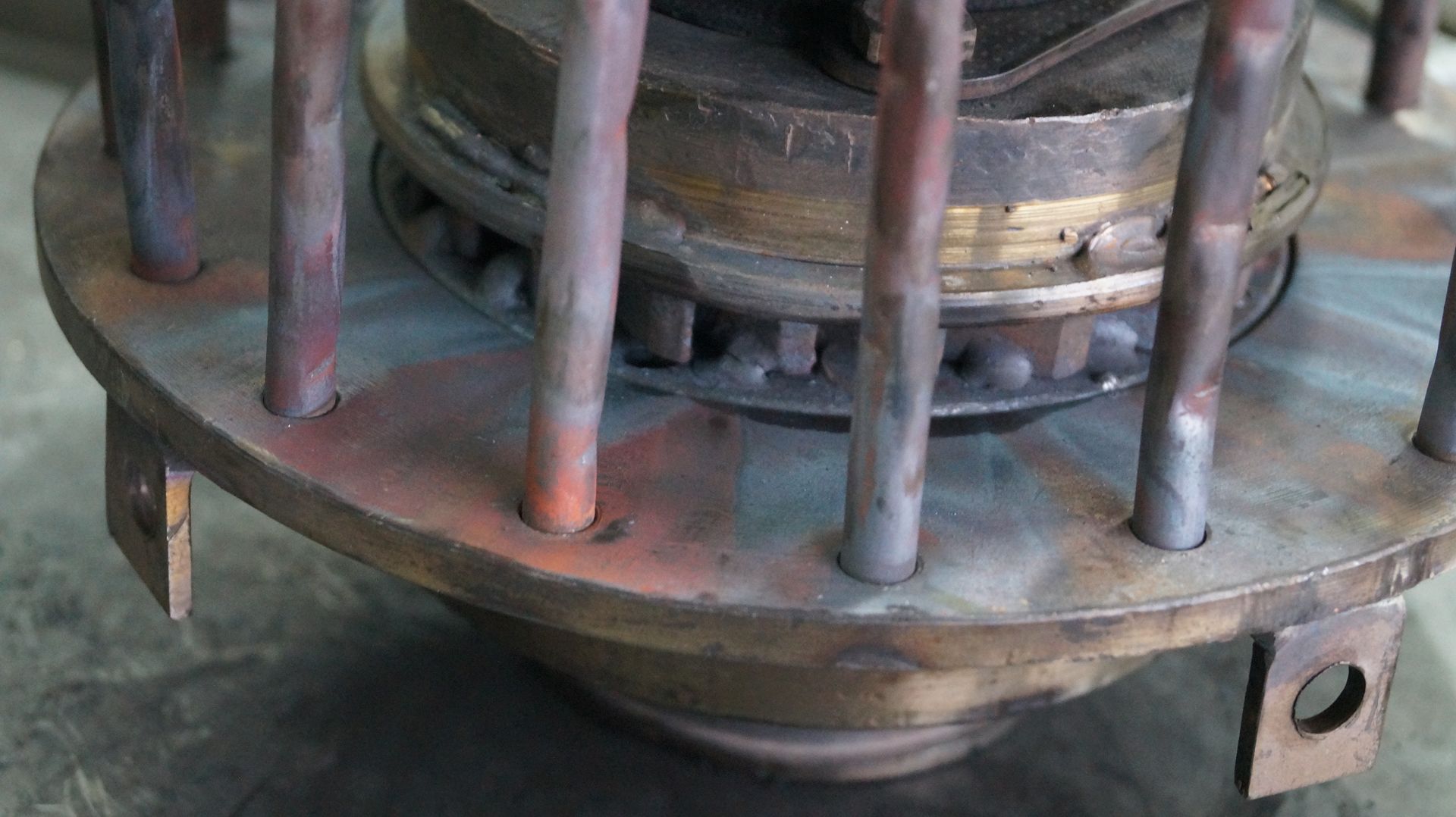
The other regions are still shining:-
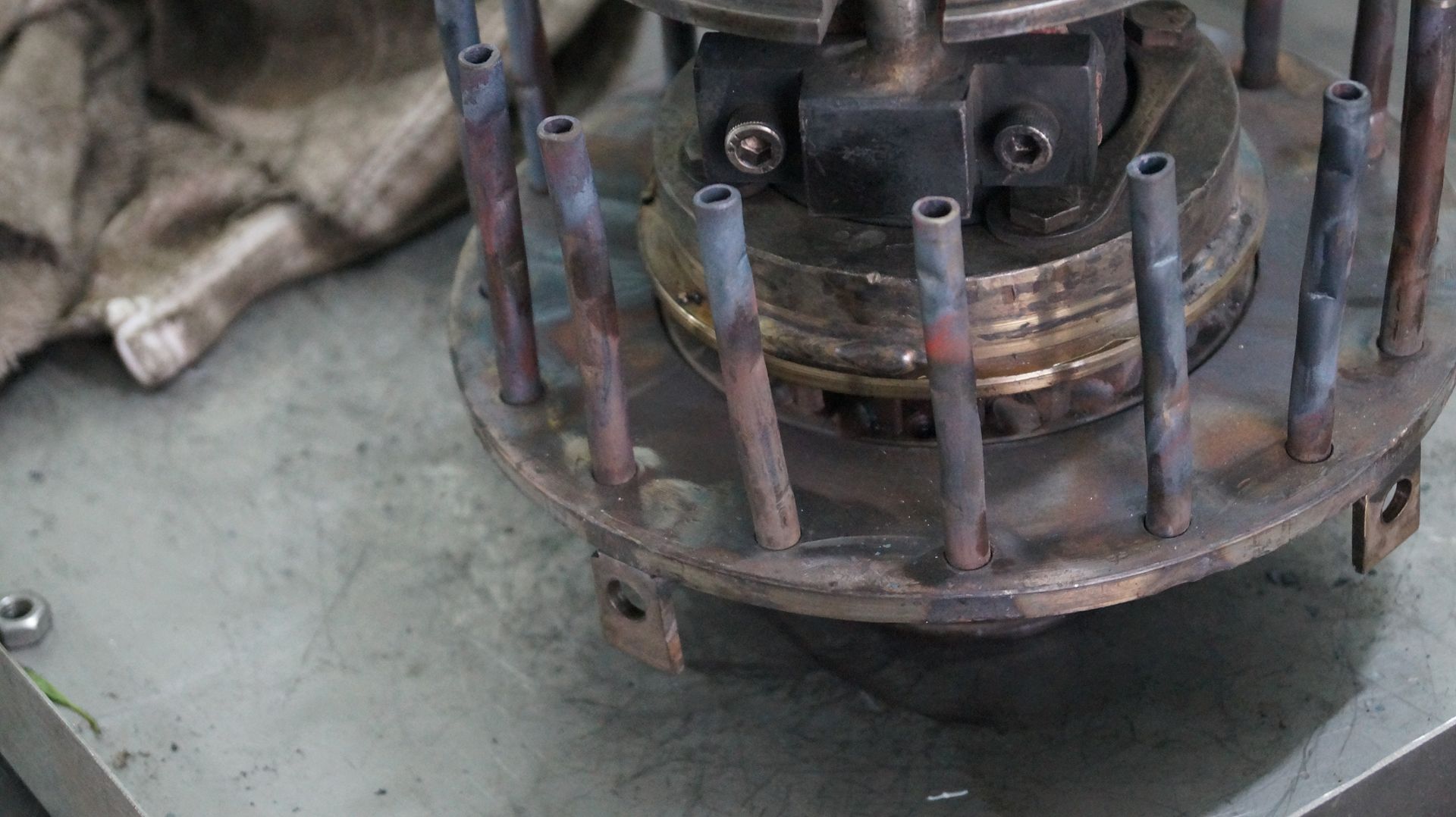
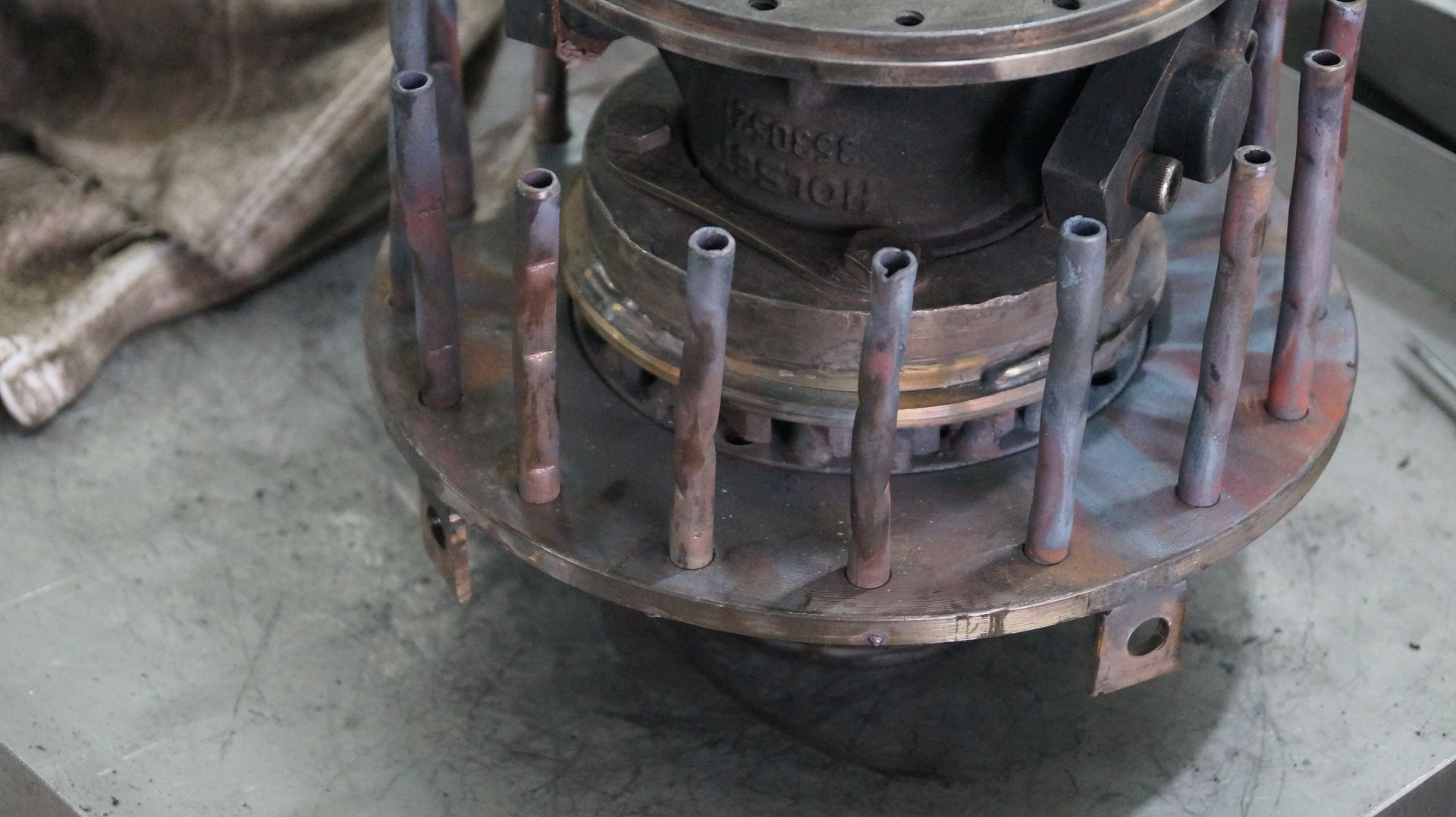
Cheers,
Patty
|
|
|
|
Post by racket on Jun 24, 2015 17:00:48 GMT -5
Hi Patty
It looks like you'll need to do a flow check of your injectors , not the usual low flow check with gasious fuel but a high flow check using liquid fuel as it appears theres inconsistency between injectors .
I notice your fuel manifold isn't circular with a central feed but simply fed from one end , this has the potential for variability from one end to the other .
Also do your injectors have a 45 degree angle bend on the outlets so that fuel is sprayed against the inner wall of the evap .
Consistency between all components is critically important , when making my fuel ring the injectors are all the same , the inlet end of each injector ( syringe needle) has the same taper, the inlet taper is always on the downstream side of the flow , and fuel is fed to the centre of the fuel ring so that theres less chance of variability in flow between the injectors .
Cheers
John
|
|
|
|
Post by madpatty on Jun 24, 2015 20:25:11 GMT -5
Hi Racket,
Just a query.
What is the cause of blueing of tertiary holes?
More fuel or less fuel.
Because the blueing is more towards the end of the fuel ring where theoratically there should be less fuelflow.
Moreover if this is caused by 45 degree cut not pressent at the injector ends then it should have shown somewhere else also whereas there are regions where combustion occurs nicely.
Cheers,
Patty
|
|
|
|
Post by racket on Jun 24, 2015 21:19:56 GMT -5
Hi Patty
I wouldn't be worried about the blueing at the tertiary holes , I'd be more concerned about those areas where theres very little blueing , this signifies to me that some parts of the flametube aren't getting the same fuel flow , theres barely enough heat to blue the primary area, because of unequal flows some areas will need "overfuelling" to compensate for the "underfuelled" segments .
Do a flow test , even if only using water pressure to check the flows.
Cheers
John
|
|
|
|
Post by madpatty on Jun 24, 2015 21:40:16 GMT -5
Hi Racket,
I just did a flow test using both gas and water.
Its a bit hard to tell when using water but with gas it appears as if the holes near the hot zones were flowing more than near the non-blue region.
Or you can say the holes near the non blue region were flowing less.
And strangely the high flowing needles were near the end of the fuel ring.
Cheers,
Patty
|
|
|
|
Post by madpatty on Jun 25, 2015 0:04:11 GMT -5
Hi Racket,
Can we be sure that problem is nowhere else like the holes etc.
What if there is lack pf air in the primary zone at the overheated ends thus combustion is occuring at the tertiary region in that area.
What if i open two or three primary region holes in heated area.?
Cheers,
Patty
|
|
|
|
Post by racket on Jun 25, 2015 4:53:44 GMT -5
Hi Patty
I know its tempting to start fiddling with holes , but they shouldn't be your problem as you have uniformity of hole sizes and positioning .
Having purple colouring at the Tertiary holes also isn't a problem , as the normal gas temperature prior to the diluting is several times which is required to produce purple colouring .
The problem is more where theres limited colouring of the flametube as it signifies "low" gas temperatures , you need to find out why .
Is the purple colouration at the "top" of the engine ??
It could be caused by starting combustion.
There are also positions where purpleing extend right up to the front wall , this isn't right .
What colouration is the inner wall ?? .............pics please as they might indicate where combustion is occurring.
Cheers
John
|
|
|
|
Post by madpatty on Jun 25, 2015 5:22:50 GMT -5
Hi Racket,
If "top" of the engine means vertically upwards (i.e oil inlet side) then YES, purple coloration is more towards that side.
I didn understand when u said. "There are also positions where purpleing extend right up to the front wall , this isn't right".
Strangely where there is heat coloration more near the tertiary holes, it is the same region where my NGVs are showing maximum bad heat effect(i.e blackish colour) and rest everywhere they seem OK.
Ans moreover it is the same reason which shows a hotspot when viewed from turbine end. That was the reason why i am more concerned about those purple tertiary holes.
cheers,
Patty
|
|
|
|
Post by madpatty on Jun 25, 2015 5:35:45 GMT -5
Pic of the rear wall:- 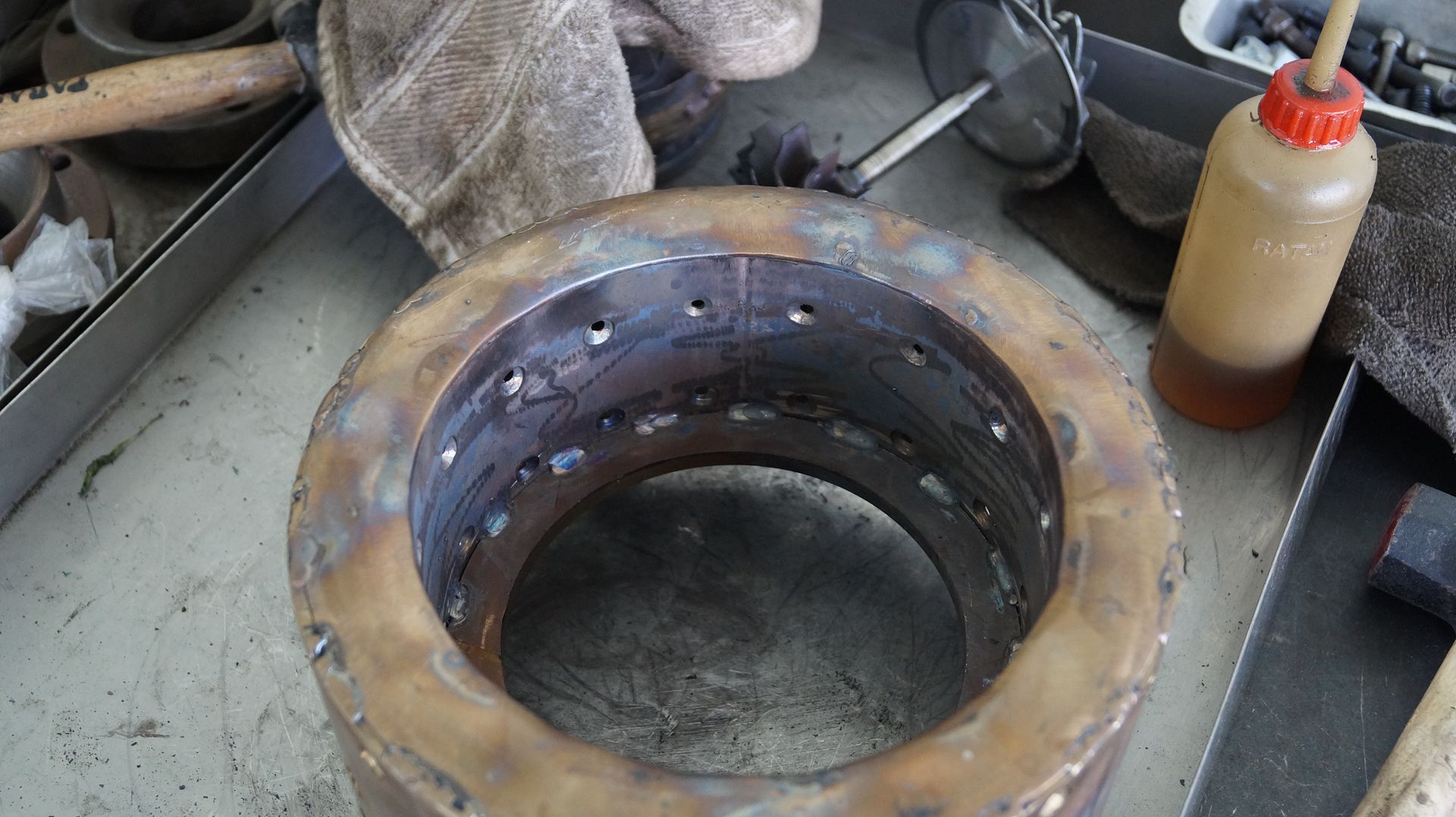 |
|
|
|
Post by madpatty on Jun 25, 2015 5:43:15 GMT -5
|
|
|
|
Post by madpatty on Jun 25, 2015 5:48:03 GMT -5
Some more:- 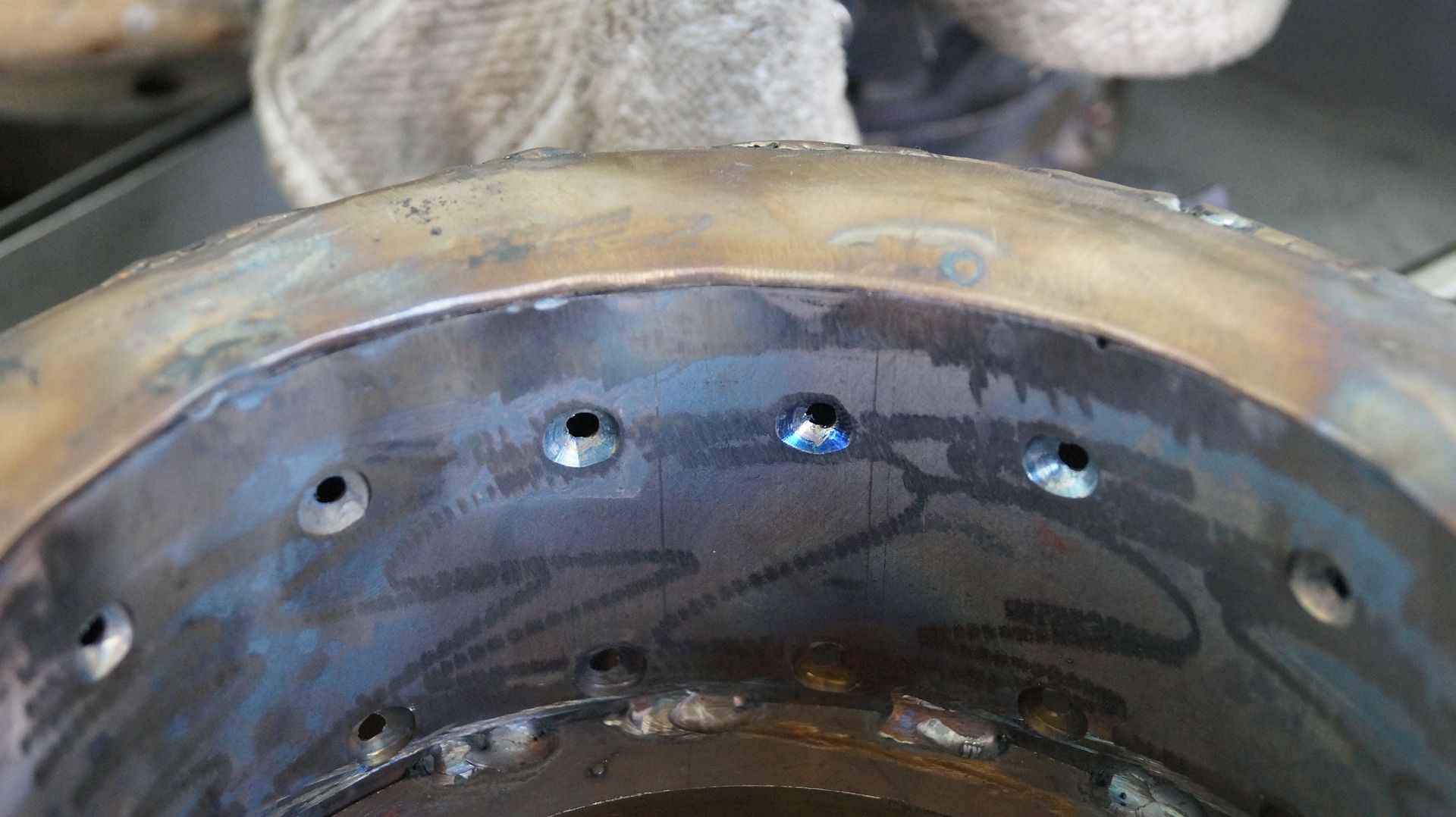 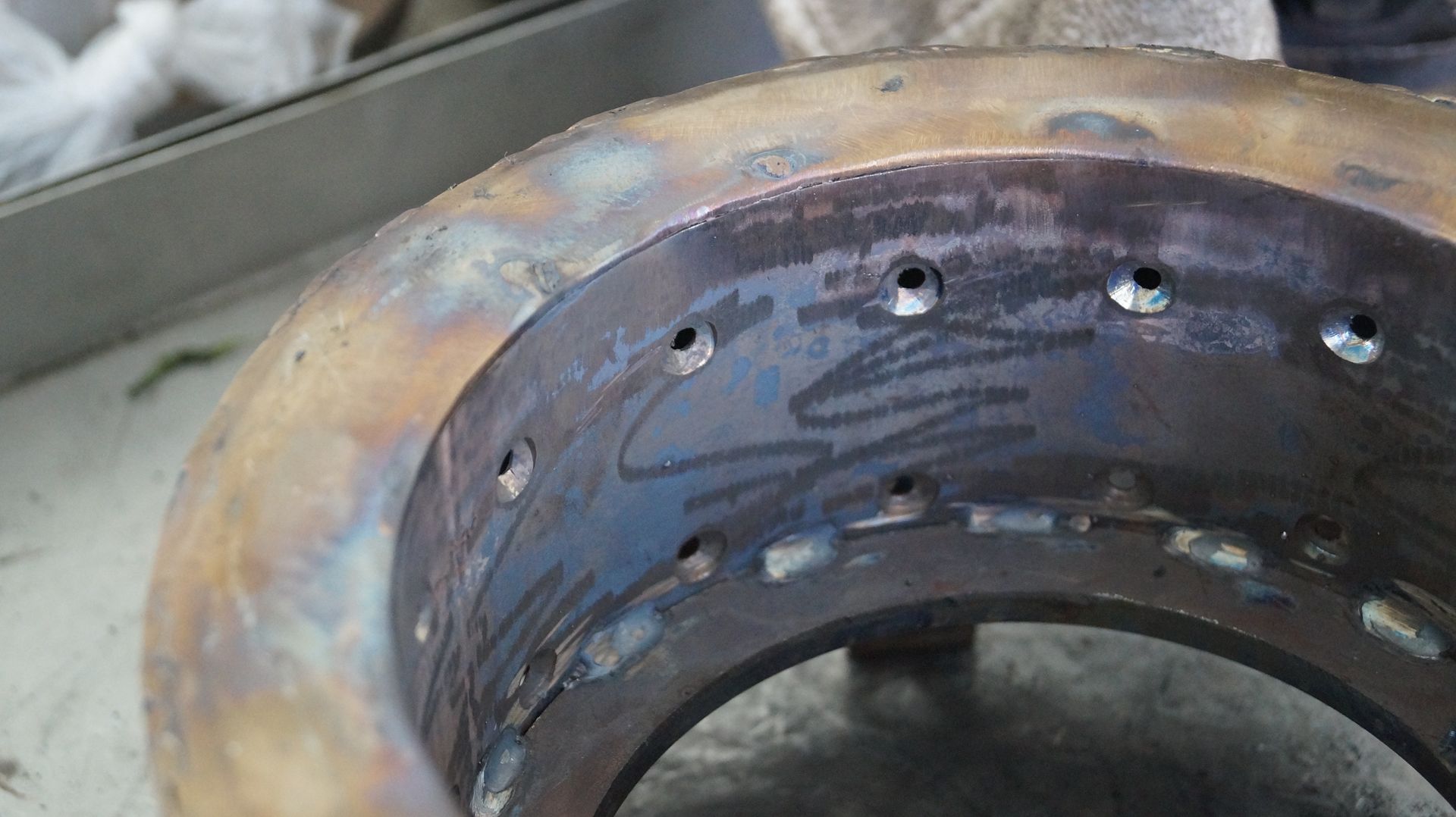 cheers, Patty |
|
|
|
Post by madpatty on Jun 25, 2015 9:20:45 GMT -5
Hi Racket,
So what exactly i have decided to do is:-
If the gas injectors are the cause of the problem due to irregularities in the fuel flow,
I am going to make a more proper fuel ring for diesel with centered fuel connection rather than from one side.
This serves two purposes:-
First one to test the engine on diesel And second one to nulify the effect of irregular fuel flow.
But my concern lies in the NGVs.I am afraid if i will again burn my NGVs with diesel. I am concerned about that hotspot.
Do u want me to do any changes before running it on diesel apart from making a uniform fuel ring which i am already doing.
Cheers,
Patty
|
|